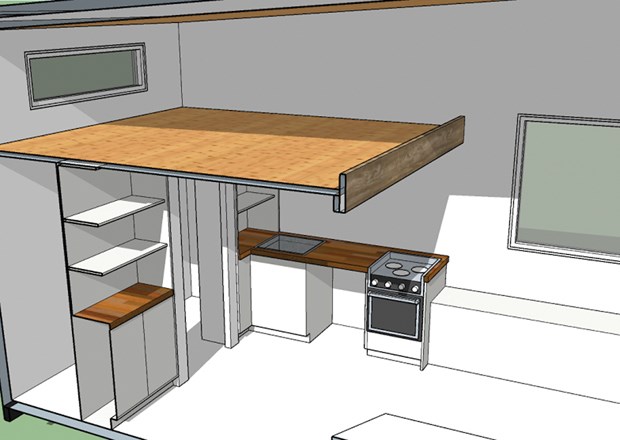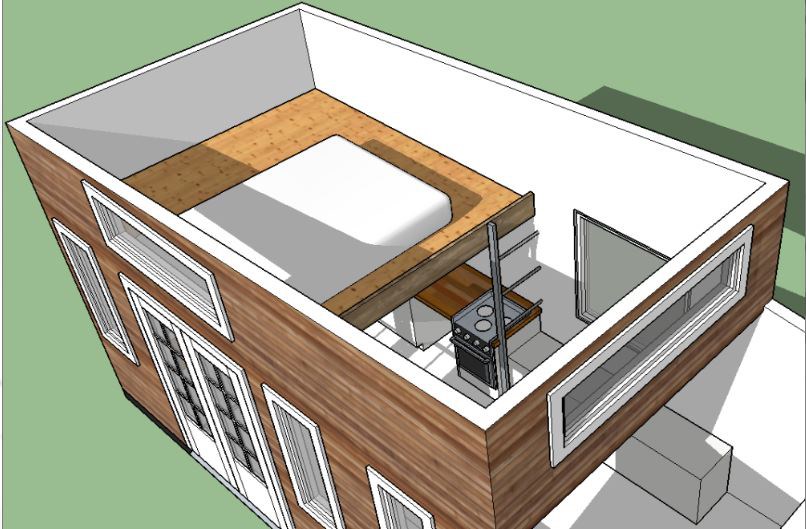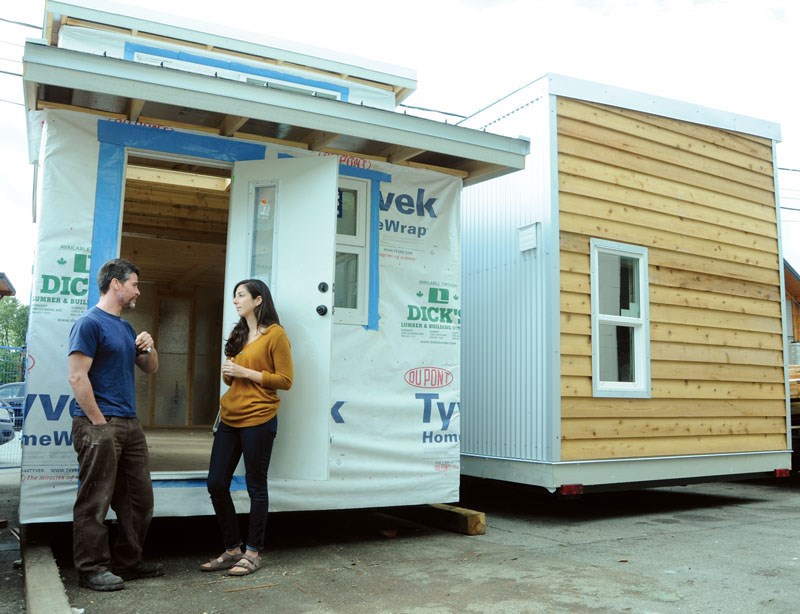“In a hole in the ground there lived a hobbit. Not a nasty, dirty, wet hole, filled with the ends of worms and an oozy smell, nor yet a dry, bare, sandy hole with nothing in it to sit down on or to eat: it was a hobbit-hole, and that means comfort.”
– J.R.R. Tolkien
She’s been looking for a parking spot for six months – but not for a car.
Fresh from university, Samantha Gambling is an aberration among millennials: a homeowner.
While her peers take decades to save for a down payment, Gambling is nearly halfway to having her house paid for.
There’s just one catch: she’s not sure where to park it.
The University of British Columbia graduate is the proud owner of a 10- by 22-foot home – a structure closer to a doll’s house than a West Vancouver mansion in both size and price.
Gambling wants her mobile mini to be the first legally parked tiny house in North Vancouver, something she playfully equates with: “the first stage of a non-violent revolution.”
“This is where my community is and this is where I want to work on issues to do with sustainable agriculture,” she says. “But I can’t realistically live here and own my own home.”
When the last nail has been pounded, Gambling estimates her tiny home will cost $80,000 – about six per cent of the cost of an average house in Metro Vancouver.
At the moment, Gambling has her eye on a Lower Lonsdale backyard as a potential parking spot.
“If I don’t get the land that I’ve been looking at … I would have to start from scratch,” she said.
• • •
It wasn’t that long ago tiny houses were a punchline: “Your house is so small you had to go outside to eat a large pizza.”
“When your momma dropped a Kleenex she had wall-to-wall carpeting.”
But when homelessness in Seattle reached a crisis point recently, with a one night count documenting 3,772 people without shelter, the city invested in tiny homes.
The Emerald City’s third tiny house encampment for homeless people opened in Rainier Valley last March. In the private sector, a 2015 Seattle Times article listed 2,380 tiny homes in various stages of development.
While there’s no study delineating the risks and benefits of tiny houses specifically, it’s a truism that more affordable housing is good for public health, said North Shore public health officer Dr. Mark Lysyshyn.
“You’ve got to be the right type of person,” Lysyshyn advises. “You put a four-person family in one of those and probably that’s going to lead to some conflict.”
For someone who can work in a cafe and resist the lure of the couch, a tiny home could be just the right fit, according to Lysyshyn.
After spending the last decade as a student – a period that saw her paying rent in a Vancouver attic that may make her tiny home feel spacious – Gambling is adamant she wants to go small and go home.

“I may not have a full-time income (from volunteering and working with NGOs) and I’m OK with that as long as this tiny house gives me the freedom.”
That freedom can come with literal and figurative costs, notes Zee Kesler, one of the artists behind the Magic Trout Imaginarium tiny house at Trout Lake in Vancouver.
After listening to tree branches scrape paint off a tiny house’s roof while looking for a place to park and shelling out cash for the towing fees that piled up when she had no place to put her tiny house, Kesler has no shortage of tips.
Besides not painting the roof, Kesler recommends incorporating the waste systems, water and heating into the design early.
Homeowners should also be wary of guests who don’t move out.
“I’ve heard that people really like living in them until they have their first or second kid,” she says.
While rural towns may take a relaxed approach to zoning, city regulations are stringent, Kesler warns.
“Don’t count on parking it in somebody’s backyard.”
Not only do backyards present a logistical challenge for parking, there’s also the prospect of neighbouring homeowners not taking kindly to tiny interlopers.
“Be aware that there’s probably going to be some tension.”
The City of North Vancouver is doing their best to ease that tension, according to city planner Michael Epp.
“At a staff level, a tiny house is basically just a really small coach house,” he said. “They’re not scary, it’s not going to cause neighbourhood change that’s worrisome.”
City regulations forbid parking mobile homes on private property, but a little decking could be added to hide the trailer, Epp explains.
The tiny house would need staff approval – not council approval – to park.
“We are looking for innovations on housing affordability,” Epp says. “If somebody can make it work, I think the city’s interested in helping them.”
That’s good news for Gambling, who has saved and salvaged to make the home a reality. She found French doors in online classifieds, scavenged windows bound for the dump, and grabbed old fence boards for her home’s panelling.
While she was initially propelled into the tiny home in the hopes it would take her off the grid, Gambling laughingly acknowledges some of her dreams were “being popped.”
Building codes nixed a compost toilet and a wine barrel shower, and the city assured her she needed to connect to municipal services.

With $35,000 of her own money invested, Gambling is hoping to crowd-fund $20,000 through Generosity.com to help finish.
Asked why people should give her money, Gambling turns pensive.
It’s more than a house, it’s a movement, she explains, a new way of living and new concept of normal.
“It’s about living mindfully, without excess. It’s about acknowledging and taking responsibility for the impact that our daily actions have on our environment, our communities, and our own health.”
It would be small, but it would be her home. And that means comfort.



